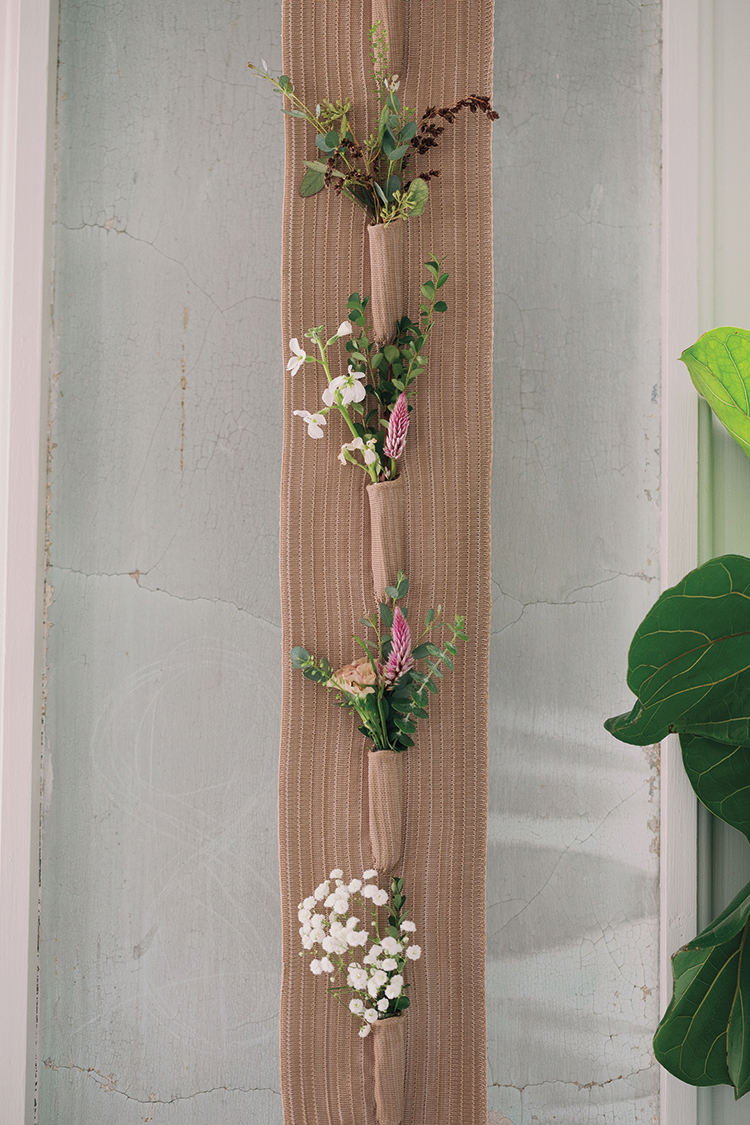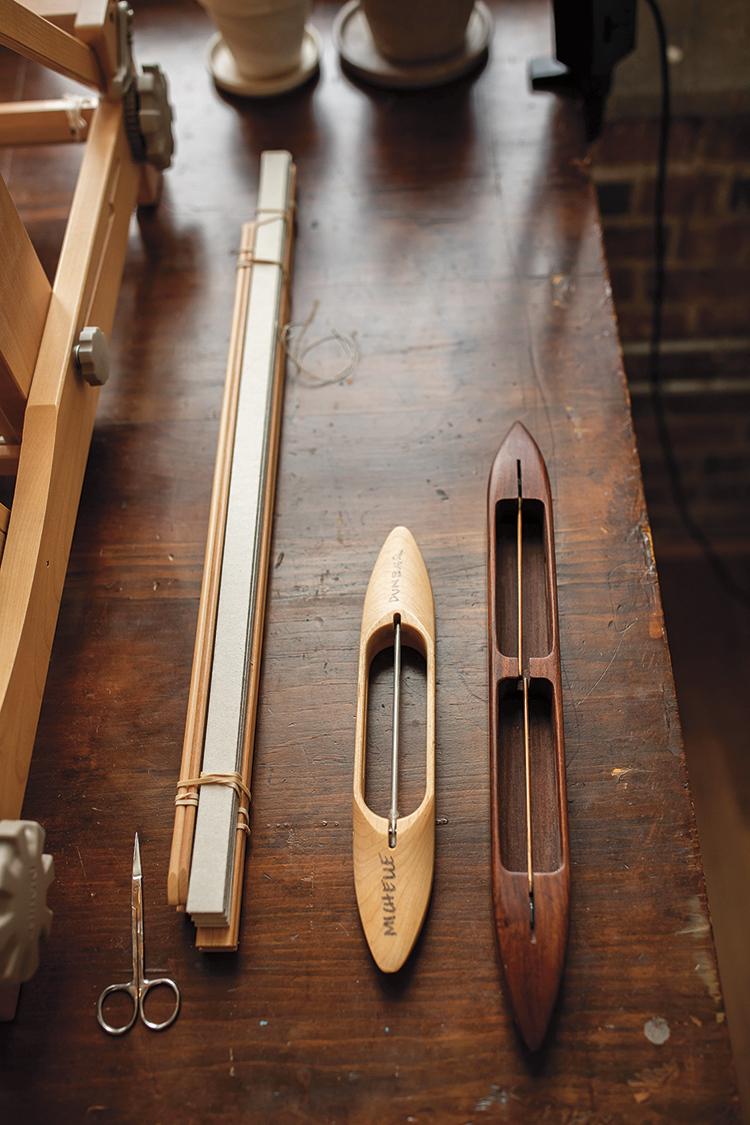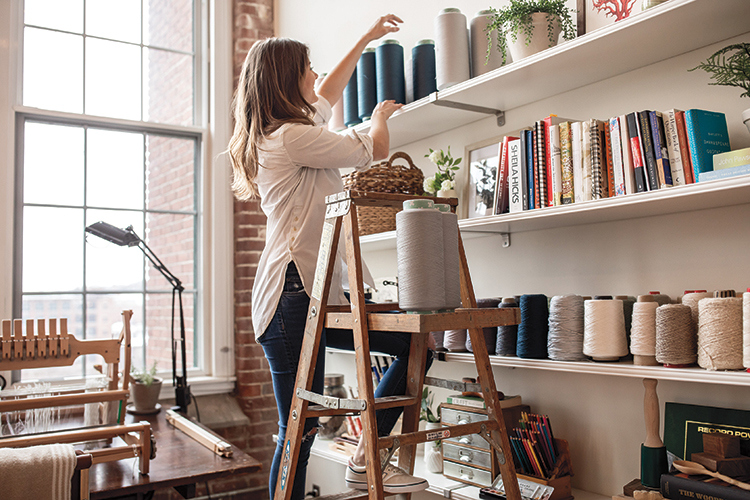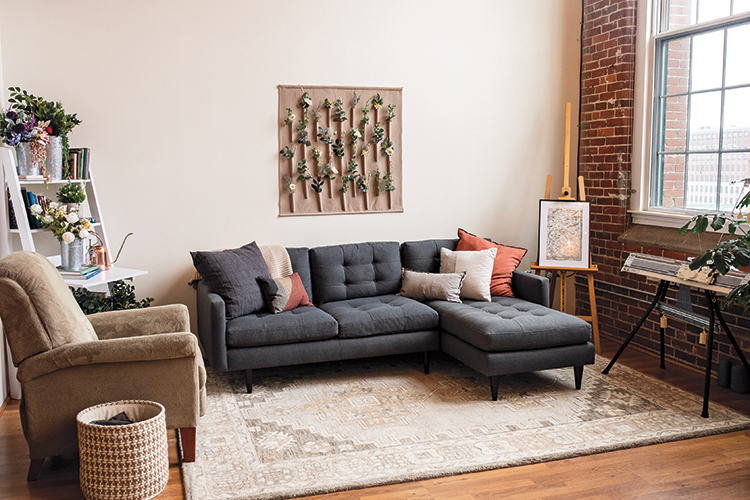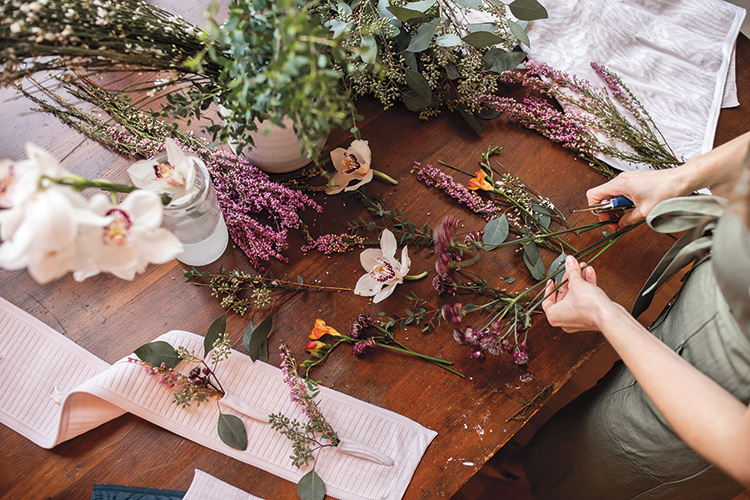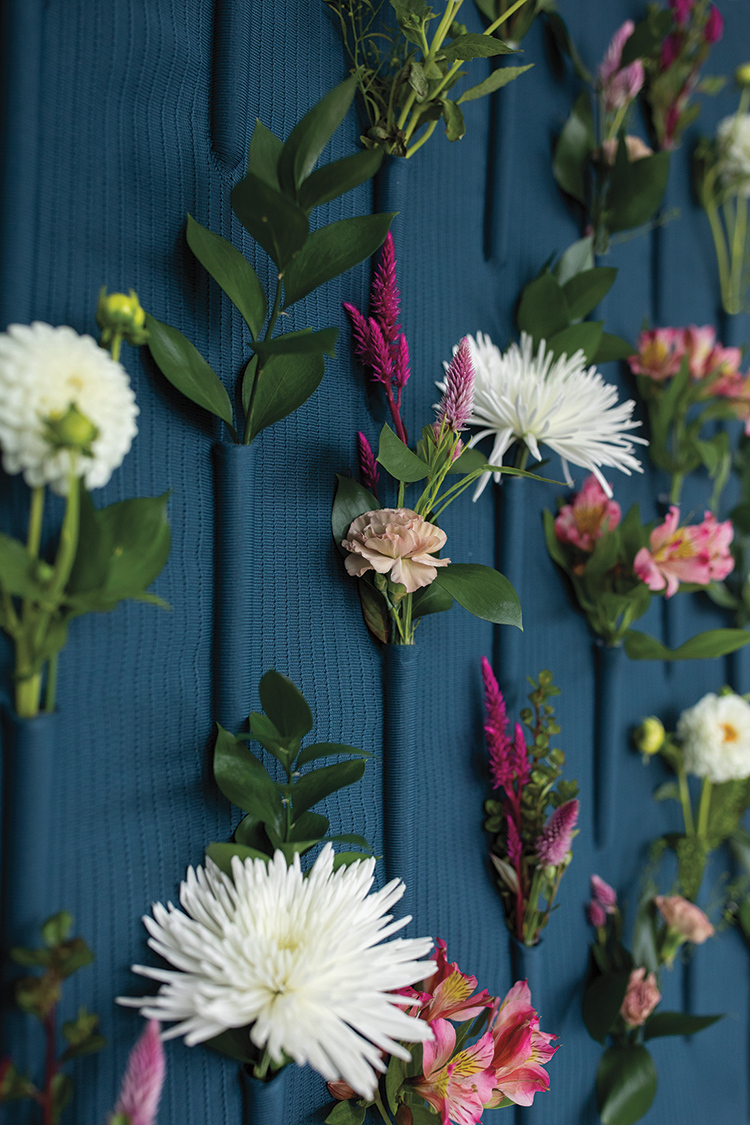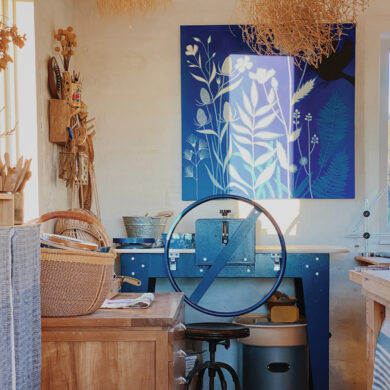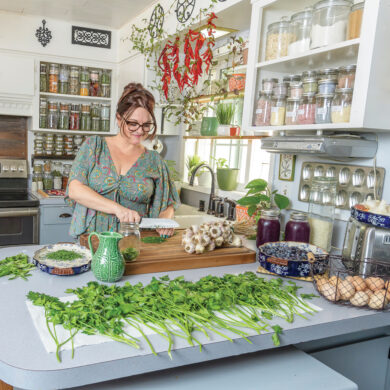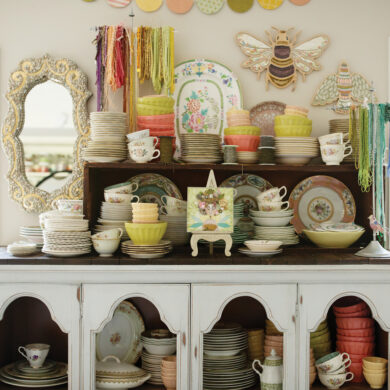I have always been a maker — much of my childhood was spent burning through boxes of crayons and bottles of glue. Anything I could get my hands on became my canvas, from traditional notebooks to the slightly less conventional, but just as accessible, windowsills and walls of my bedroom. My parents have always been incredibly supportive of my passion; instead of chastising me for making a mess, they enrolled me in art classes. With time, my steady stream of “creations” matured, but my love of the artistic process remained.
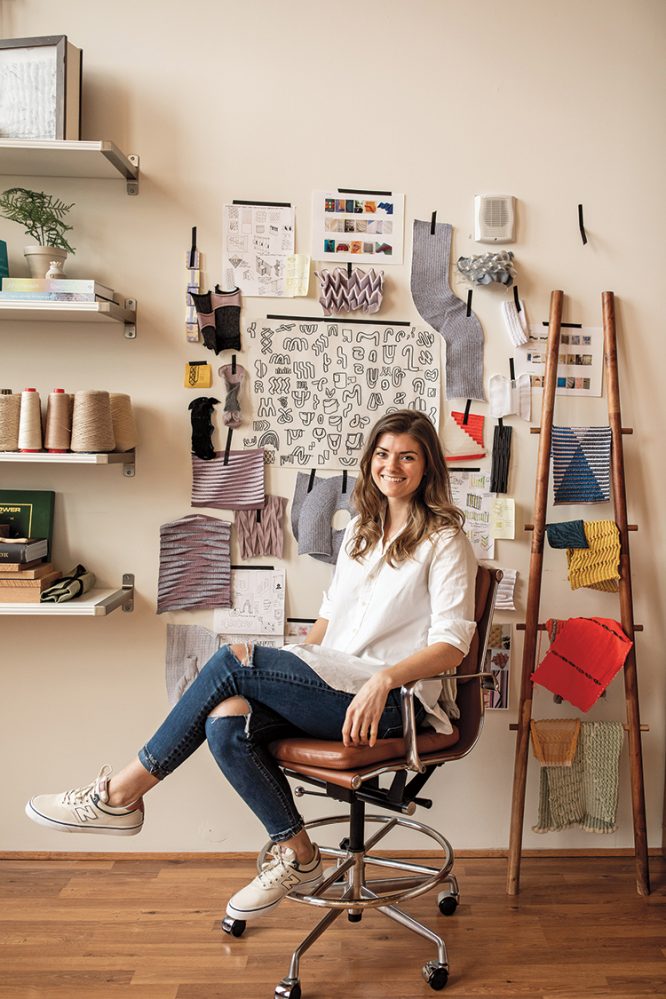
When it came time to think about college, I knew I wanted to pursue art as a career. I originally found myself drawn to the colorful prints and patterns on fabrics and thought I wanted to pursue fashion through the lens of material design. I majored in textiles at Rhode Island School of Design and found myself developing a deep appreciation for the ancient art of creating fabric. The process felt like a poetic blend of meditation and creativity—with a healthy dose of frustration!
I had a bit of a breakthrough during my junior year when I was taking classes in Stoll 3D knitting, 8 harness hand weaving, and creative bookbinding. I realized that working with the constraints of the loom and knitting machine allowed me to create looser, more conceptual work. It wasn’t simply a matter of willing my pencil to move in a certain direction—I learned to love the element of spontaneity involved when working with yarns. I found myself exploring the conceptual and sculptural possibilities rather than focusing on the color and pattern potential of fabric.
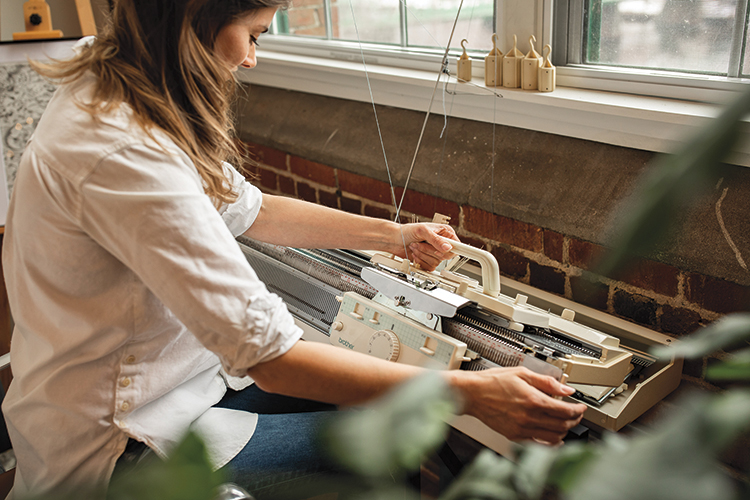
With this realization, I became fascinated with the relationship between people and objects. I feel the objects we surround ourselves with aren’t just inanimate clutter. They take on memories, emotions, and experiences from our own lives. As a maker, I wonder how we can use objects to facilitate interactions and relationships between people. I strive to make art that creates a mood, starts a conversation, or encourages collaboration. I wanted to blend this artistic curiosity with technical expertise I’ve gained both at school and post-graduation as a 3D knit innovation designer within the footwear industry. Birdseye Studio was born out of a desire to explore shapes and form by combining conceptual craft and technology. On the surface, the name Birdseye is a nod to my favorite knit stitch, but on a deeper level, it reflects my desire to keep sight of the bigger picture even when I’m fussing over details.
When I found myself exploring projects to create with Birdseye, I was drawn to the ones that would invite the individual to be a part of the artistic process. I chose an interactive flower wall that encourages the individual to pick and style flowers, greenery, or plants in the vases encased within the knit tapestries. This collaborative experience creates a connection between the hand of the maker and the touch of the owner. I also hope it encourages the owner to engage with nature and observe the beauty in a simple walk. With the ability to store little treasures in the vases, be it flowers or twigs, the owner can bring their memories of the outdoors back inside with them. It becomes a way to celebrate personal moods and the changing of seasons.
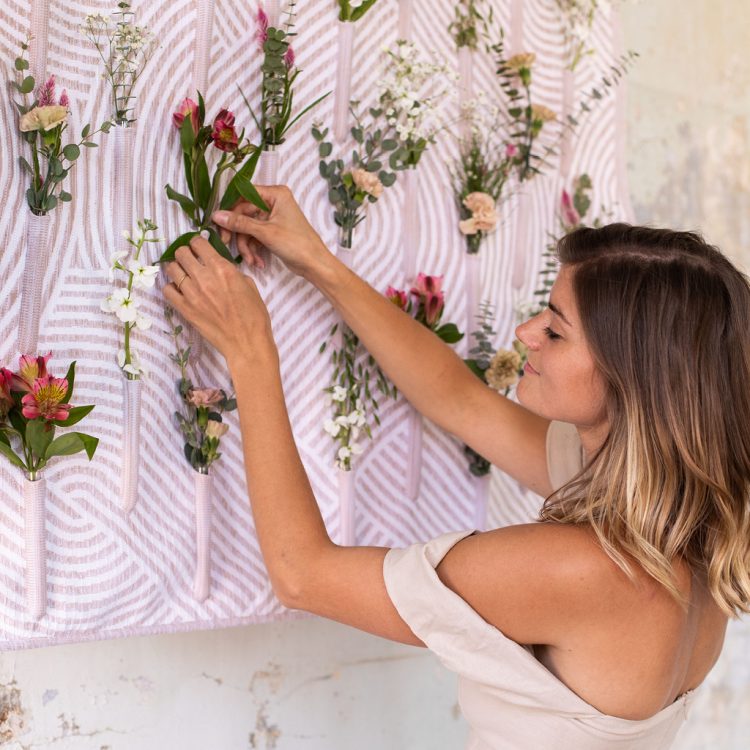
I personally feel happier, healthier, and more recharged when my space is filled with plants and flowers. I hope these wall hangings make it easier to bring greenery inside and onto one’s walls. The coziness of the knit adds to this calming visual but also has the added wellness benefit of absorbing sound. By acting as an acoustic panel to help dampen unwanted noises and vibrations, these hangings are a perfect way to create an intimate space.
The knits that I’m making celebrate plants and greenery, so it was very important to design with sustainability in mind. As a maker bringing more things into the world, I feel a responsibility to create mindfully and tread gently. All Birdseye hangings are knit in one piece, with the vase tubes and hanging system built into the fabric. This means that there is no waste to throw away as opposed to traditional cut-and-sew methods. 3D knitting technology is incredible; I can integrate multiple yarns, structures, and shaped elements all into one piece. I use 100% recycled polyester yarn from post-consumer plastic water bottles. Color is added to the raw yarn with an environmentally friendly solution dye process. This technique uses much less water and releases far fewer chemicals than traditional yarn dyeing, and the rich color stands the test of time even in the sunniest of rooms. In the future, I’m excited to explore other sustainable methods and yarns, including locally spun natural animal fibers, Tencel, or hemp.
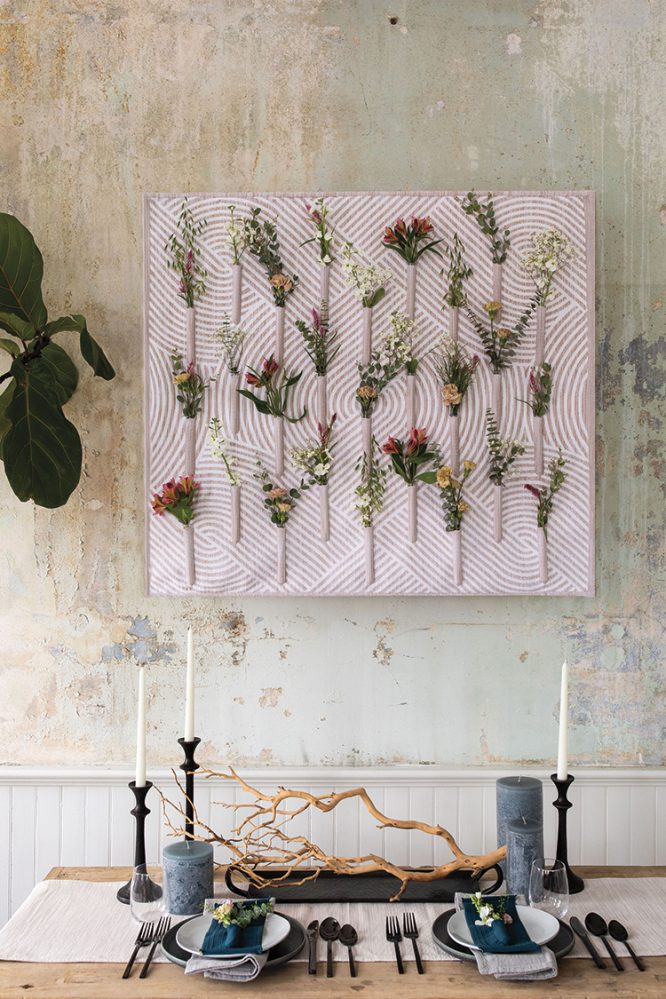
Besides looking into additional yarn-types, I’m excited to continue pushing what I create at Birdseye. My current pieces range in size from 4 inches to 4 feet, and I would love to play with knits at a larger scale. I am very interested in architectural art installations. I’ve worked on a few in the past—a public seating installation in a community park and a large-scale fabric backdrop for my wedding. I loved how these pieces interacted with their surroundings and were designed to bring people together. Influencing the mood of a space and how a person moves through an environment is fascinating to me as a designer. 3D knitting would be a great medium for this type of work, given the shaping possibilities and the ability to create fabric at scale.
“Derive happiness in oneself from a good day’s work, from illuminating the fog that surrounds us.” —Henri Matisse
I would also love to explore integrating other materials and processes that I enjoy in my free time into my art, like weaving and woodworking. I recently moved into a beautiful new studio space with tall ceilings, brick walls, and huge windows. I wanted to create an inspiring, warm atmosphere, so I made a trio of basket-woven lanterns to hang from the ceiling and added a wall of shelves to surround myself with my favorite books and tools. My dad’s vintage drafting table fits in perfectly with the mill building aesthetic, and it’s a wonderful place to watch the birds fly by while working. Now that I have more space, I’m excited about integrating other materials and processes that I enjoy in my free time into my art, like weaving and woodworking. I can’t wait to see how the history and character of the old textile mill building inspire the direction of my work!
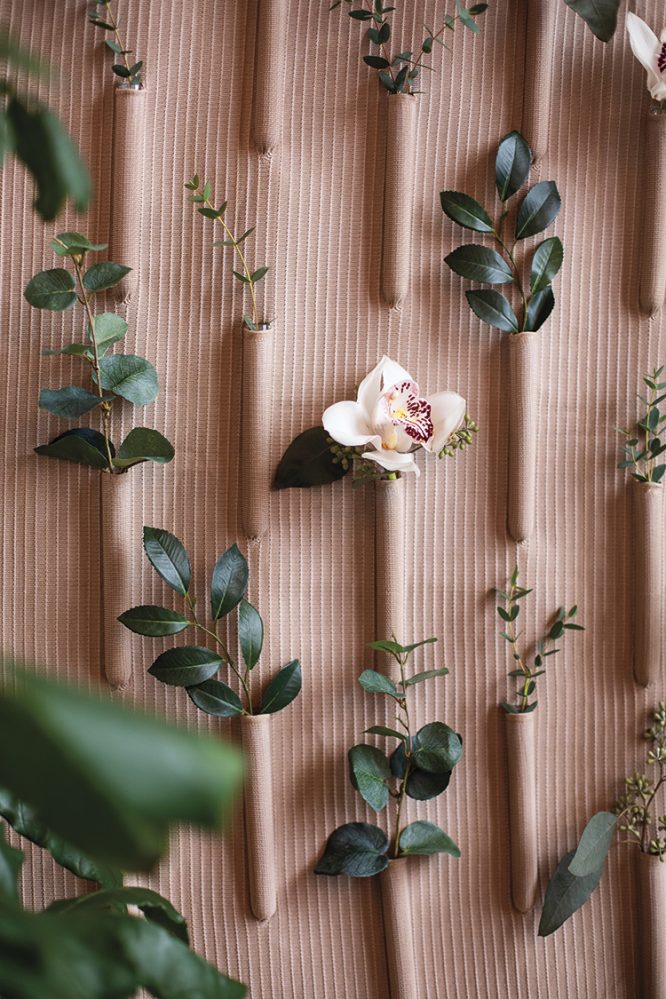
“Color! What a deep and mysterious language, the language of dreams.”
—Paul Gauguin
Although the materials and techniques have changed over the years, I have learned to appreciate the full sensory experience of making. Whether it’s the soft-sweatery feel of the knit against the needles of my machine, the sound of old wood creaking as I weave on my loom, or the earthy smell of freshly shaved wood as I’m carving, I feel connected to the world around me when I’m immersed in a project. In addition to pursuing my passion, I live for the daily joys of dog-eared sketchbook pages, perky houseplants, and cuddly pups.
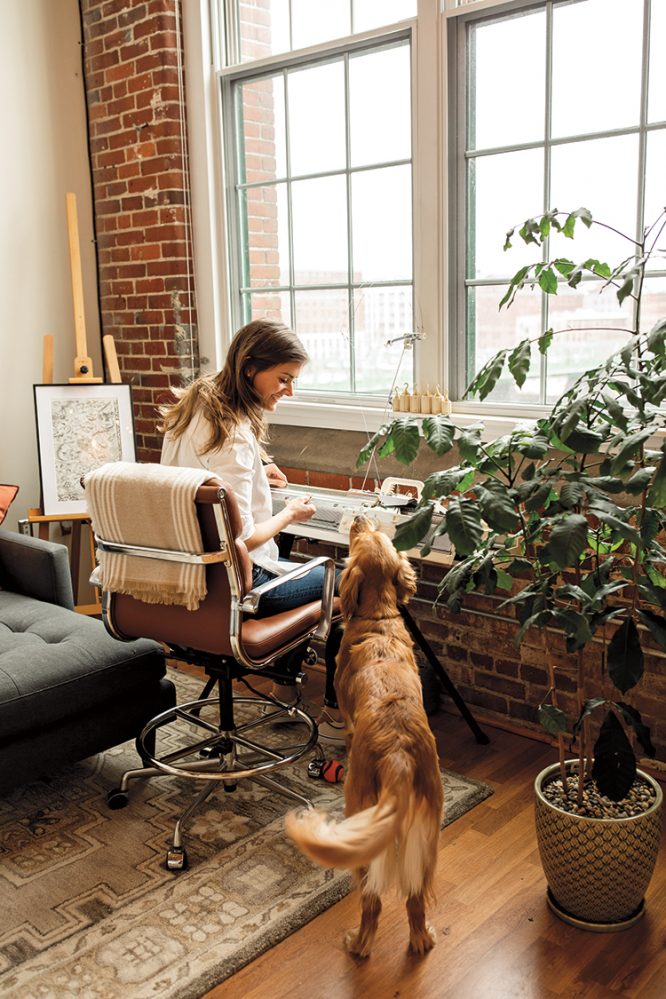
I love that these hangings allow me to surround myself with fresh flowers year-round. In the spring and summer, I like to collect wildflowers and plant cuttings from morning walks with Winnie. I’ll stop by my favorite local farms and florists to pick up additional flowers as needed. In the fall, I like to mix in dried flowers and grasses for a seasonal look. Around the holidays, I’ll mix in berries and leftover pine cuttings from my Christmas tree. Especially in the heart of winter, I’ve also found that silk flowers are a nice addition to real flowers and plants for additional variety and color. It’s also nice to use the fabric hangings as a decorative way to display plant cuttings for propagation. No matter how I style the hangings, I’m always happy to surround myself with the sights and smells of fresh flowers!
I have always been a maker — much of my childhood was spent burning through boxes of crayons and bottles of glue. Anything I could get my hands on became my canvas, from traditional notebooks to the slightly less conventional, but just as accessible, windowsills and walls of my bedroom. My parents have always been incredibly supportive of my passion; instead of chastising me for making a mess, they enrolled me in art classes. With time, my steady stream of “creations” matured, but my love of the artistic process remained.

When it came time to think about college, I knew I wanted to pursue art as a career. I originally found myself drawn to the colorful prints and patterns on fabrics and thought I wanted to pursue fashion through the lens of material design. I majored in textiles at Rhode Island School of Design and found myself developing a deep appreciation for the ancient art of creating fabric. The process felt like a poetic blend of meditation and creativity—with a healthy dose of frustration!
I had a bit of a breakthrough during my junior year when I was taking classes in Stoll 3D knitting, 8 harness hand weaving, and creative bookbinding. I realized that working with the constraints of the loom and knitting machine allowed me to create looser, more conceptual work. It wasn’t simply a matter of willing my pencil to move in a certain direction—I learned to love the element of spontaneity involved when working with yarns. I found myself exploring the conceptual and sculptural possibilities rather than focusing on the color and pattern potential of fabric.

With this realization, I became fascinated with the relationship between people and objects. I feel the objects we surround ourselves with aren’t just inanimate clutter. They take on memories, emotions, and experiences from our own lives. As a maker, I wonder how we can use objects to facilitate interactions and relationships between people. I strive to make art that creates a mood, starts a conversation, or encourages collaboration. I wanted to blend this artistic curiosity with technical expertise I’ve gained both at school and post-graduation as a 3D knit innovation designer within the footwear industry. Birdseye Studio was born out of a desire to explore shapes and form by combining conceptual craft and technology. On the surface, the name Birdseye is a nod to my favorite knit stitch, but on a deeper level, it reflects my desire to keep sight of the bigger picture even when I’m fussing over details.
When I found myself exploring projects to create with Birdseye, I was drawn to the ones that would invite the individual to be a part of the artistic process. I chose an interactive flower wall that encourages the individual to pick and style flowers, greenery, or plants in the vases encased within the knit tapestries. This collaborative experience creates a connection between the hand of the maker and the touch of the owner. I also hope it encourages the owner to engage with nature and observe the beauty in a simple walk. With the ability to store little treasures in the vases, be it flowers or twigs, the owner can bring their memories of the outdoors back inside with them. It becomes a way to celebrate personal moods and the changing of seasons.

I personally feel happier, healthier, and more recharged when my space is filled with plants and flowers. I hope these wall hangings make it easier to bring greenery inside and onto one’s walls. The coziness of the knit adds to this calming visual but also has the added wellness benefit of absorbing sound. By acting as an acoustic panel to help dampen unwanted noises and vibrations, these hangings are a perfect way to create an intimate space.
The knits that I’m making celebrate plants and greenery, so it was very important to design with sustainability in mind. As a maker bringing more things into the world, I feel a responsibility to create mindfully and tread gently. All Birdseye hangings are knit in one piece, with the vase tubes and hanging system built into the fabric. This means that there is no waste to throw away as opposed to traditional cut-and-sew methods. 3D knitting technology is incredible; I can integrate multiple yarns, structures, and shaped elements all into one piece. I use 100% recycled polyester yarn from post-consumer plastic water bottles. Color is added to the raw yarn with an environmentally friendly solution dye process. This technique uses much less water and releases far fewer chemicals than traditional yarn dyeing, and the rich color stands the test of time even in the sunniest of rooms. In the future, I’m excited to explore other sustainable methods and yarns, including locally spun natural animal fibers, Tencel, or hemp.

Besides looking into additional yarn-types, I’m excited to continue pushing what I create at Birdseye. My current pieces range in size from 4 inches to 4 feet, and I would love to play with knits at a larger scale. I am very interested in architectural art installations. I’ve worked on a few in the past—a public seating installation in a community park and a large-scale fabric backdrop for my wedding. I loved how these pieces interacted with their surroundings and were designed to bring people together. Influencing the mood of a space and how a person moves through an environment is fascinating to me as a designer. 3D knitting would be a great medium for this type of work, given the shaping possibilities and the ability to create fabric at scale.
“Derive happiness in oneself from a good day’s work, from illuminating the fog that surrounds us.” —Henri Matisse
I would also love to explore integrating other materials and processes that I enjoy in my free time into my art, like weaving and woodworking. I recently moved into a beautiful new studio space with tall ceilings, brick walls, and huge windows. I wanted to create an inspiring, warm atmosphere, so I made a trio of basket-woven lanterns to hang from the ceiling and added a wall of shelves to surround myself with my favorite books and tools. My dad’s vintage drafting table fits in perfectly with the mill building aesthetic, and it’s a wonderful place to watch the birds fly by while working. Now that I have more space, I’m excited about integrating other materials and processes that I enjoy in my free time into my art, like weaving and woodworking. I can’t wait to see how the history and character of the old textile mill building inspire the direction of my work!

“Color! What a deep and mysterious language, the language of dreams.”
—Paul Gauguin
Although the materials and techniques have changed over the years, I have learned to appreciate the full sensory experience of making. Whether it’s the soft-sweatery feel of the knit against the needles of my machine, the sound of old wood creaking as I weave on my loom, or the earthy smell of freshly shaved wood as I’m carving, I feel connected to the world around me when I’m immersed in a project. In addition to pursuing my passion, I live for the daily joys of dog-eared sketchbook pages, perky houseplants, and cuddly pups.

I love that these hangings allow me to surround myself with fresh flowers year-round. In the spring and summer, I like to collect wildflowers and plant cuttings from morning walks with Winnie. I’ll stop by my favorite local farms and florists to pick up additional flowers as needed. In the fall, I like to mix in dried flowers and grasses for a seasonal look. Around the holidays, I’ll mix in berries and leftover pine cuttings from my Christmas tree. Especially in the heart of winter, I’ve also found that silk flowers are a nice addition to real flowers and plants for additional variety and color. It’s also nice to use the fabric hangings as a decorative way to display plant cuttings for propagation. No matter how I style the hangings, I’m always happy to surround myself with the sights and smells of fresh flowers!






